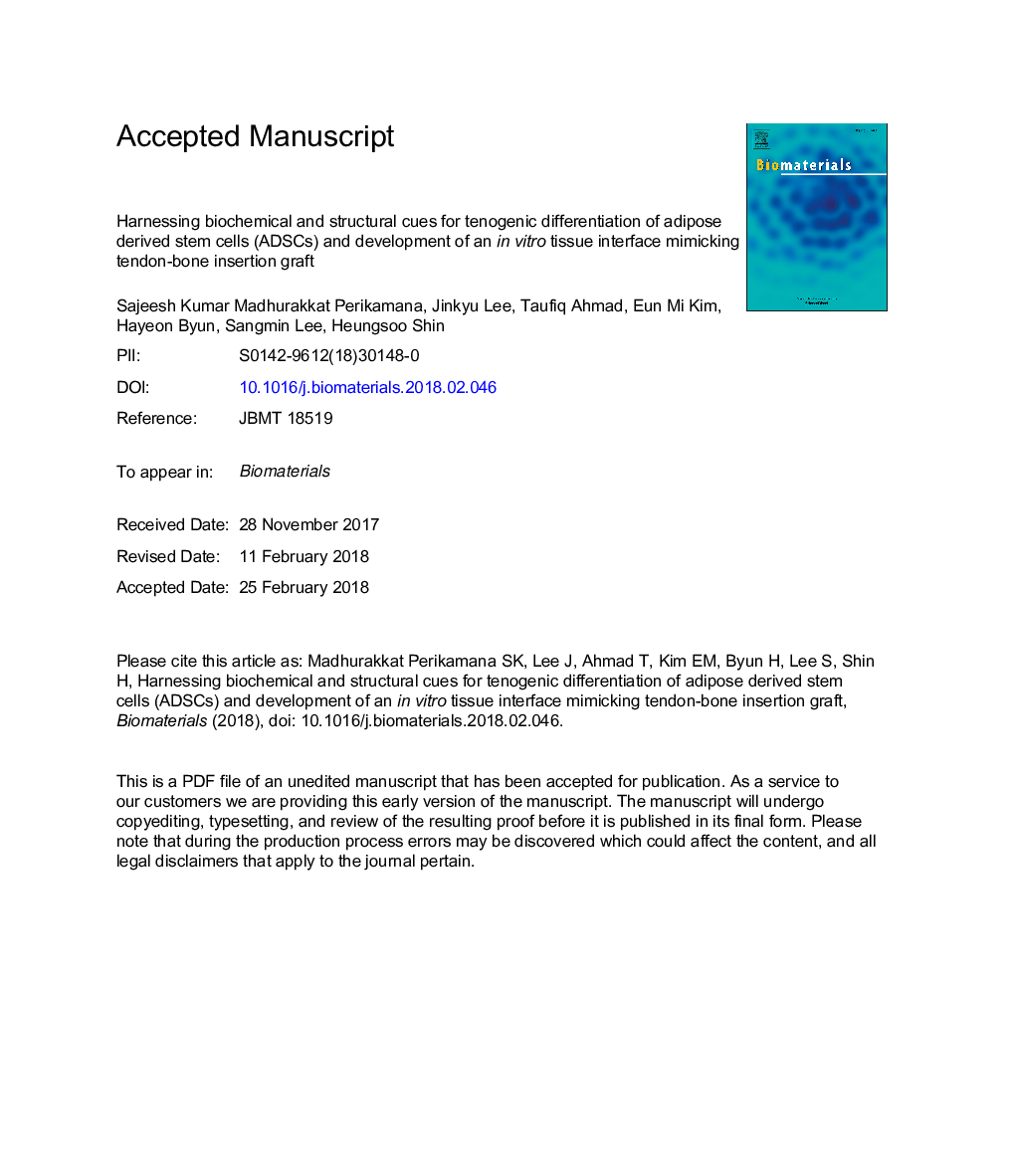| کد مقاله | کد نشریه | سال انتشار | مقاله انگلیسی | نسخه تمام متن |
|---|---|---|---|---|
| 6484572 | 1416102 | 2018 | 48 صفحه PDF | دانلود رایگان |
عنوان انگلیسی مقاله ISI
Harnessing biochemical and structural cues for tenogenic differentiation of adipose derived stem cells (ADSCs) and development of an in vitro tissue interface mimicking tendon-bone insertion graft
دانلود مقاله + سفارش ترجمه
دانلود مقاله ISI انگلیسی
رایگان برای ایرانیان
کلمات کلیدی
موضوعات مرتبط
مهندسی و علوم پایه
مهندسی شیمی
بیو مهندسی (مهندسی زیستی)
پیش نمایش صفحه اول مقاله

چکیده انگلیسی
Tendon-bone interface tissue is extremely challenging to engineer because it exhibits complex gradients of structure, composition, biologics, and cellular phenotypes. As a step toward engineering these transitional zones, we initially analyzed how different (topographical or biological) cues affect tenogenic differentiation of adipose-derived stem cells (ADSCs). We immobilized platelet-derived growth factor - BB (PDGF-BB) using polydopamine (PD) chemistry on random and aligned nanofibers and investigated ADSC proliferation and tenogenic differentiation. Immobilized PDGF greatly enhanced the proliferation and tenogenic differentiation of ADSCs; however, nanofiber alignment had no effect. Interestingly, the PDGF immobilized aligned nanofiber group showed a synergistic effect with maximum expression of tenogenic markers for 14 days. We also generated a nanofiber surface with spatially controlled presentation of immobilized PDGF on an aligned architecture, mimicking native tendon tissue. A gradient of immobilized PDGF was able to control the phenotypic differentiation of ADSCs into tenocytes in a spatially controlled manner, as confirmed by analysis of the expression of tenogenic markers and immunofluorescence staining. We further explored the gradient formation strategy by generation of a symmetrical gradient on the nanofiber surface for the generation of a structure mimicking bone-patellar-tendon-bone with provision for gradient immobilization of PDGF and controlled mineralization. Our study reveals that, together with biochemical cues, favorable topographical cues are important for tenogenic differentiation of ADSCs, and gradient presentation of PDGF can be used as a tool for engineering stem cell-based bone-tendon interface tissues.
ناشر
Database: Elsevier - ScienceDirect (ساینس دایرکت)
Journal: Biomaterials - Volume 165, May 2018, Pages 79-93
Journal: Biomaterials - Volume 165, May 2018, Pages 79-93
نویسندگان
Sajeesh Kumar Madhurakkat Perikamana, Jinkyu Lee, Taufiq Ahmad, Eun Mi Kim, Hayeon Byun, Sangmin Lee, Heungsoo Shin,